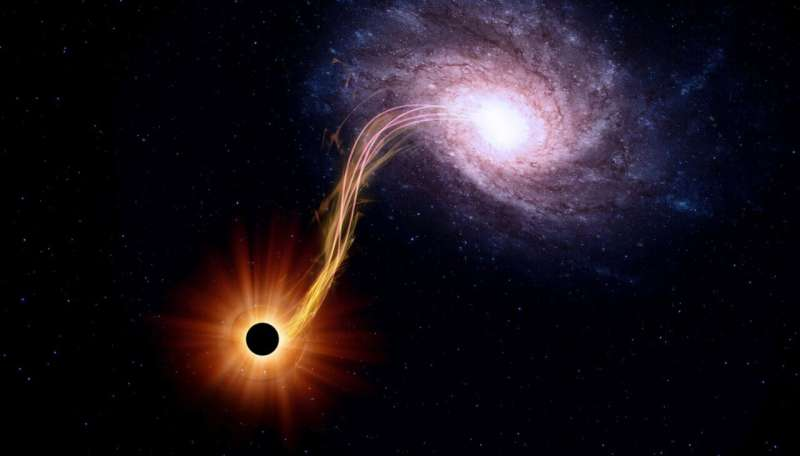Unraveling the Mysteries of X-Ray Emissions from Black Hole Jets
Unraveling the Mysteries of X-Ray Emissions from Black Hole Jets
Introduction:
Black holes have long captivated scientists and astrophysicists, presenting a myriad of enigmatic phenomena. Recently, an intriguing discovery has shed new light on the nature of black hole jets through the analysis of X-ray emissions. In this article, we will explore the breakthrough research highlighted in the article "X-ray Emissions Shed Light on Black Hole Jets," discussing the significance of these findings and their implications for our understanding of these cosmic powerhouses.
The Phenomenon of Black Hole Jets:
The Phenomenon of Black Hole Jets:
Black hole jets are powerful, high-speed streams of charged particles that are ejected from the vicinity of supermassive black holes at the center of galaxies. These jets can extend for thousands of light-years and emit radiation across various wavelengths, including X-rays.
Probing X-ray Emissions:
Probing X-ray Emissions:
Researchers have been using advanced observational techniques and instruments to study the X-ray emissions from black hole jets. By analyzing the X-ray radiation, scientists gain insights into the mechanisms that generate and shape these extraordinary phenomena.
Unveiling the Nature of X-ray Emissions:
Unveiling the Nature of X-ray Emissions:
The recent study discussed in the article sheds light on the origin of X-ray emissions from black hole jets. Researchers have identified two main processes contributing to the X-ray radiation: synchrotron emission and inverse Compton scattering.
Synchrotron Emission:
Synchrotron Emission:
This process involves charged particles, accelerated by magnetic fields within the jet, emitting radiation across the electromagnetic spectrum, including X-rays. The intensity and characteristics of the synchrotron emission can provide clues about the conditions and dynamics within the black hole jet.
Inverse Compton Scattering:
Inverse Compton Scattering:
In this process, low-energy photons in the jet's environment are boosted to higher energies through interactions with high-speed electrons within the jet. These boosted photons can manifest as X-ray emissions, providing valuable information about the particles and their interactions within the jet.
Advancing our Understanding:
Advancing our Understanding:
The insights gained from studying X-ray emissions from black hole jets contribute to our understanding of fundamental astrophysical processes. They offer key information about the dynamics of black hole accretion disks, the acceleration mechanisms of particles in the jets, and the interaction of jets with their surroundings.
Implications for Cosmology and High-Energy Astrophysics:
Implications for Cosmology and High-Energy Astrophysics:
Understanding black hole jets and their X-ray emissions has broader implications for various fields of astrophysics. It aids in unraveling the mysteries of galaxy formation, the growth and evolution of supermassive black holes, and the role of black hole feedback in shaping galaxies and the cosmic environment.
Future Directions:
Future Directions:
Ongoing research and technological advancements will further enhance our ability to study and interpret X-ray emissions from black hole jets. Future missions and observatories, such as upcoming X-ray telescopes, will provide even greater precision and sensitivity, enabling scientists to delve deeper into the physics of these cosmic phenomena.
Conclusion:
Conclusion:
The analysis of X-ray emissions from black hole jets represents a significant step forward in our understanding of these awe-inspiring cosmic structures. By unraveling the processes behind X-ray emissions, scientists gain valuable insights into the intricate dynamics and fundamental physics governing black hole jets. Continued research in this field promises to unveil more secrets of black holes and their profound influence on the cosmos.


Comments
Post a Comment